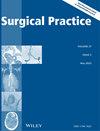Advances in clinical brain–computer interfaces for assistive substitution and rehabilitation: A rapid scoping review
Abstract
Objective
This scoping review explores the rapidly evolving field of brain–computer interface (BCI) technologies, with a particular emphasis on the fundamental concepts, advances made, and prospective applications. Following the 2022 Annual Scientific Meeting of the Hong Kong Neurosurgical Society themed ‘Neuromodulation and Brain-Computer Interface’, this article represents the first comprehensive review of BCI technologies from a Hong Kong perspective, providing a balanced viewpoint that reflects both academic and practical clinical insights for surgeons considering the implementation of these emerging technologies.
Methodology
A rapid scoping review was conducted to clarify key concepts and trends in current BCI technologies, including signal acquisition methods, effectors, applications, and ethical issues. Key developments, particularly those relevant to Hong Kong, were identified and analysed.
Results
We summarise various modalities for the acquisition of central nervous system signals, introducing the techniques and steps involved in the data processing pipeline. We highlight two major arms of BCI applications and their promises in advancing patient care: assistive communication or substitution and closed-loop rehabilitation or neuromodulation. The exciting frontier also invites a host of ethical questions which must be thoroughly discussed.
Conclusions
The growing body of knowledge in BCIs offers new treatment options for patients requiring assistive substitution and rehabilitation. The review hopes to provide a rigorous foundation for future research, invite subsequent discussions and translational studies, and support the incorporation of BCI technologies into local healthcare.


 求助内容:
求助内容: 应助结果提醒方式:
应助结果提醒方式:


